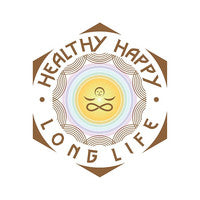Yamuna's letter for this month shares with us how our all parts of our bodies need space. Read the full post here
In this post I want to talk about the torso, especially for people who are use them frequently.
In order to bring freedom and balance to your torso you first need to understand exactly where your torso is. Simply put, your torso is everything between your shoulders and hips.Your torso has a front, back, and two sides.
Attached to your torso at each shoulder you have your arms which connect to your hands. Your torso, structurally speaking, would be useless to you without your arms and hands allowing you to put into action what you want to do.
Your hips are where your pelvis connects your legs and feet. Your legs and feet transport you and allow you to be mobile.
How you use your arms and hands, and legs and feet directly effect how your torso holds up throughout your life.
Questions to ask yourself when you are sitting at a computer
- What position is your torso ?
- Do you twist in your seat so that your body is turned more to one side?
- Are both shoulders facing straight forward?
- Is your chest dropped forward?
- Do you stick your ribcage out in front of you?
- Are one or both of your shoulders rounded forward?
- Is your head in front of your shoulders?
- Are both feet flat on the floor?
- Are both feet parallel at hips width apart?
- Are your knees gripped together or are your knees at hip distance apart?
- Do you always cross one leg over the other?
After asking yourself these questions you are probably more heightened in your awareness of how you sit most often when working. Your mind is starting to think about your most common ways of sitting. This is probably something you you don't usually pay attention to. Becoming aware of how you do the most simple daily activity is the first step towards beginning to understand how you can improve it and prevent future injuries.
Maybe you noticed how you sit slightly twisted to one side. If you do this always and for years you need to get that your body will become twisted in that position and get stuck in it before you are even were aware of this. From your pelvis, through your spine, including your organs and rib cage your body will begin to hold into this posture. You can only imagine what adding 25-50 years of doing this will do to your body. As your body ages and begins shrinking and calcifying into this posture that you never ever noticed was slowly locking in and damaging your torso in the first place. Sad and so common.
If you noticed your chest dropped forward understand that dropping the ribcage forward and down places more weight down into the pelvis, hips, lumbar and sacral vertebrae. The organs have more pressure placed on them and they can begin to get stuck to each other, to fascia, muscle, and bone. The downward pressure puts pressure down into the intestines, bladder and reproductive organs, too. As the ribcage weighs down in the front of the body it also restricts heart and lung function. Over years, this can obstruct heart function and circulation, let alone not allowing maximum oxygen to circulate from the lungs into the heart.

If you happen to be a person who sticks their ribs out in front of the body, this posture can cause tightness in the lower back and lower thoracic vertebrae. It causes tension and gripping of all the thoracic vertebrae and shoulders.
If your shoulders are rounded forward this will surely drop the head forward. This builds up tension in the back of the neck and can cause shoulder and neck problems as well as headaches.
If your feet and legs are not parallel at hips distance apart your legs and feet can begin to cause misalignments in your hips and pelvis. These patterns can then connect with the upper body misalignments and cause all the misalignments throughout the torso to lock into the body.
GETTING YOUR TORSO TO WORK FOR YOU
For your torso to support and help you prevent injuries here are some facts you need to know:
- Your pelvis/hips need to be aligned.
- Your shoulders, rib cage, spine, neck and head need to be aligned.
- Your torso needs to be as long, strong and flexible as possible.
- Your torso needs equal length, strength and flexibility in the muscles that support the front, sides and back of the torso.
- Your vertebrae need as much healthy space between them as possible to avoid compressing downward and causing herniated or bulging discs.
- The more decompressed your vertebrae are the more height is lost as you age.
- When the torso is in neutral position the weight of the body is not forward or backward but rests in the center. From this position the body remains light and stands effortlessly.
- When the torso is aligned with full length, strength and flexibility your organs function better, your circulation improves, your blood pressure stays healthy.
Please read my next post where I share a couple of routines to create a long, strong, aligned and flexible torso as well as give a brief anatomy lesson on the torso.
To Your Health,
John

